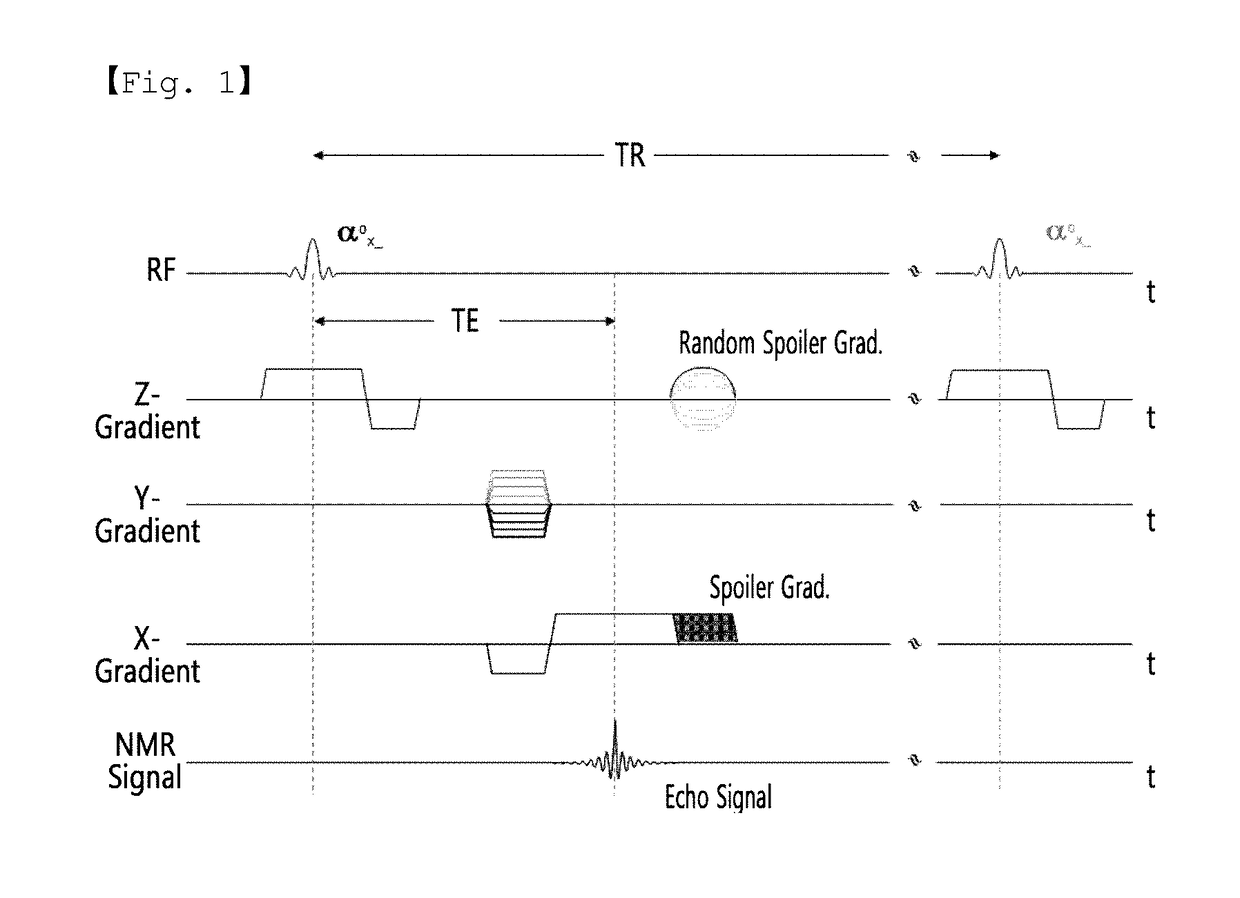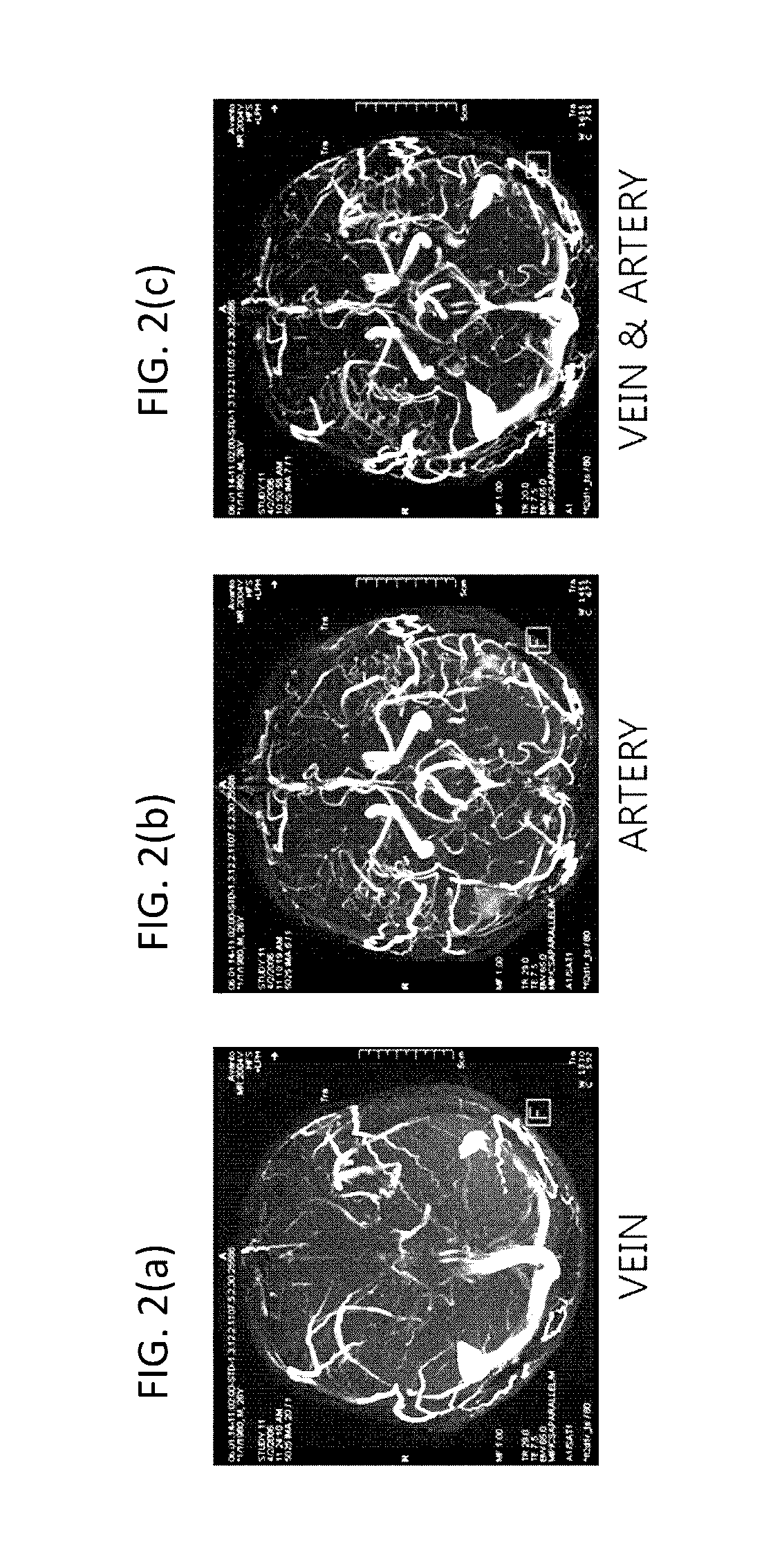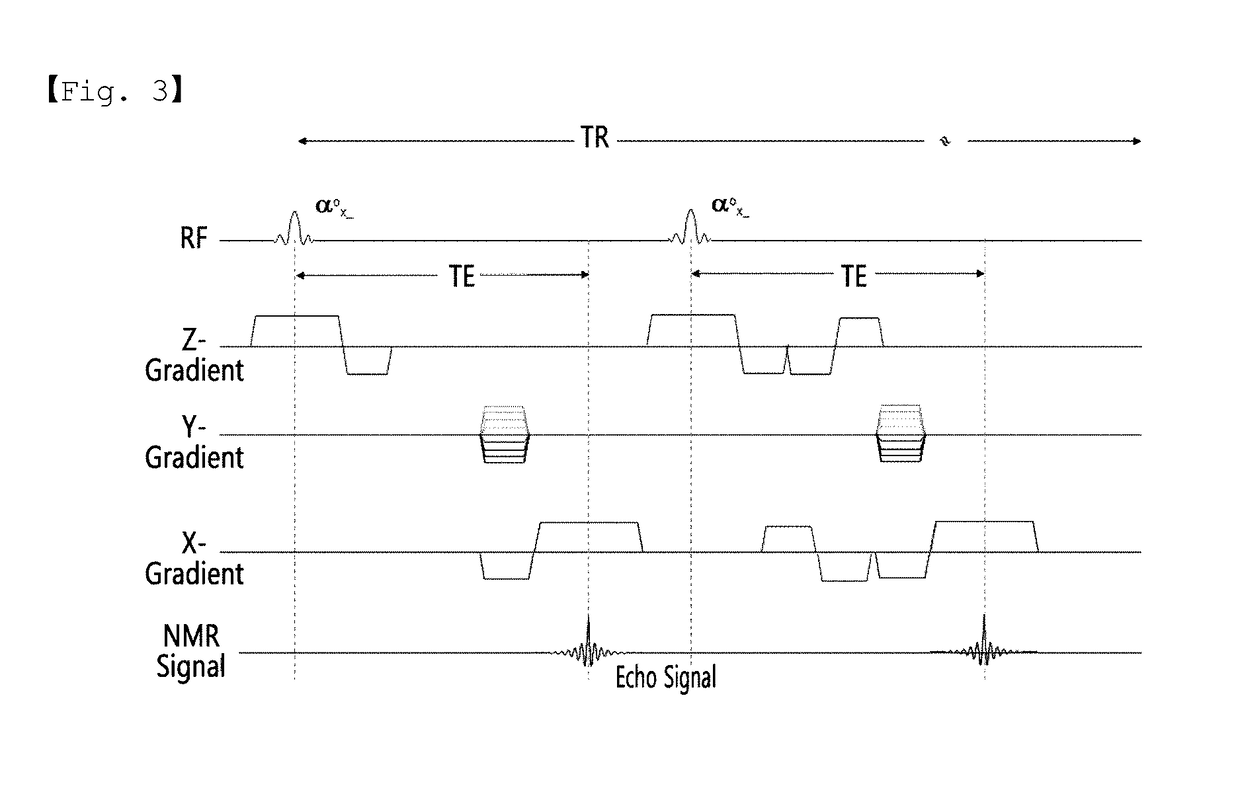Method for acquiring t2* and vascular images from magnetic resonance imaging system
a magnetic resonance imaging and vascular imaging technology, applied in the field of imaging techniques implemented by magnetic resonance imaging systems, can solve the problems of low signal-to-noise ratio (snr) and lower tissue contrast, and achieve the effect of shortening the total image acquisition time and reducing the burden on patients
- Summary
- Abstract
- Description
- Claims
- Application Information
AI Technical Summary
Benefits of technology
Problems solved by technology
Method used
Image
Examples
Embodiment Construction
[0028]Hereinafter, preferred embodiments of the method for acquiring images through the magnetic resonance imaging system according to the present invention are described in detail with reference to the attached drawings. However, description concerning well-known functions and configurations which can make the subject matter of the present invention unnecessarily vague will be omitted.
[0029]The configurations of the MRI system as applied to the present invention are widely known in the art and so the description thereof is omitted.
[0030]FIG. 3 represents the pulse sequences used in the method for concurrently acquiring T2* and vascular images according to an embodiment of the present invention.
[0031]In FIG. 3, Z-gradient, Y-gradient and X-gradient represent a slice selection, a phase decoding and a readout gradient, respectively.
[0032]As shown in FIG. 3, the readout gradient without a flow compensation is applied in a negative direction and then applied in a positive direction so a...
PUM
 Login to View More
Login to View More Abstract
Description
Claims
Application Information
 Login to View More
Login to View More - R&D
- Intellectual Property
- Life Sciences
- Materials
- Tech Scout
- Unparalleled Data Quality
- Higher Quality Content
- 60% Fewer Hallucinations
Browse by: Latest US Patents, China's latest patents, Technical Efficacy Thesaurus, Application Domain, Technology Topic, Popular Technical Reports.
© 2025 PatSnap. All rights reserved.Legal|Privacy policy|Modern Slavery Act Transparency Statement|Sitemap|About US| Contact US: help@patsnap.com



